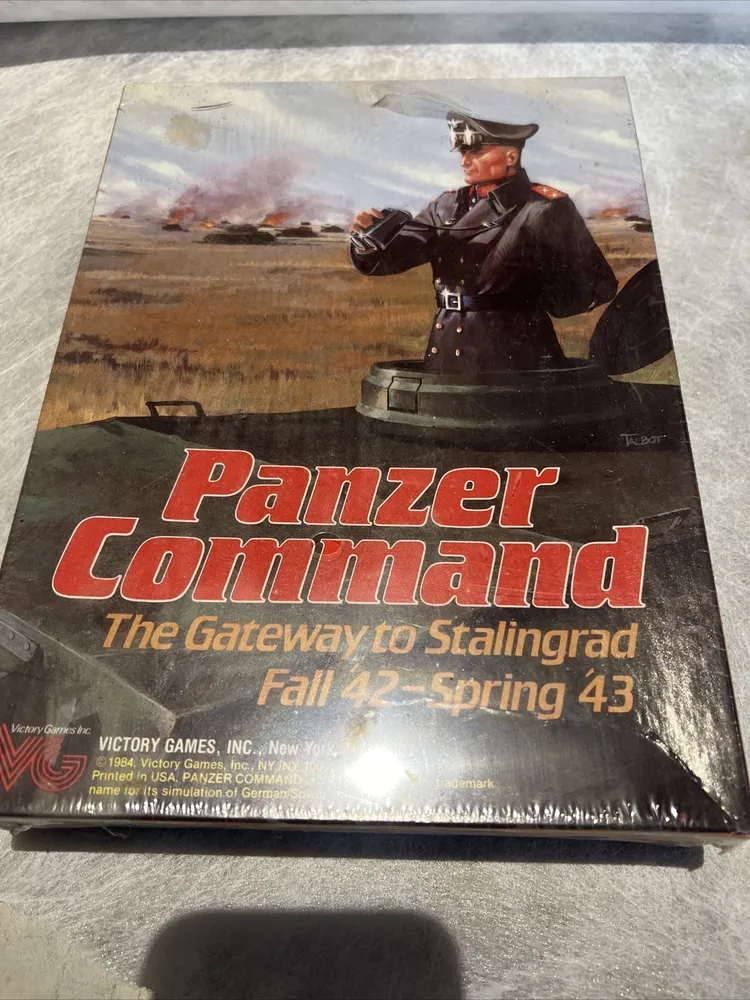Panzer Command: The Gateway to Stalingrad (1984)
Panzer Command
Panzer Command is a tactical level simulation of armored combat, released by Victory Games in 1984. The game recreates the battles that took place across the steppes of the Soviet Union during the middle years of World War II. Each player commands 40 to 60 company-sized units of a German armored division or Soviet tank corps, maneuvering forces across treacherous terrain to engage the enemy in a life or death struggle. The game introduced a chit-draw initiative system, where each player could activate one formation (regiment/brigade) at a time, leading to an unpredictable order in each game turn. This mechanic is widely used in wargames today.
Why is Panzer Command Popular?
Panzer Command is popular and significant because it offers a thought-provoking and exciting game experience, allowing players to immerse themselves in the challenge of battlefield command. The game’s popularity has led to various editions and re-releases, including a 3-D PC tactical wargame series developed by American studio Koiosworks and published by Matrix Games for Windows. Additionally, the game has received positive reviews and has been featured in various magazines and online platforms.
Game Components of Panzer Command: The Gateway to Stalingrad
How To Setup Panzer Command: The Gateway to Stalingrad
Setting up the game involves several steps. First, players must choose a scenario, which defines the specific battle and the forces involved. The game board is then laid out, and the counters for each side are placed according to the scenario instructions. Players must also familiarize themselves with the rulebook and any specific rules or modifications for the chosen scenario. The dice and player aids are kept within easy reach to facilitate gameplay.
Gameplay Mechanics and Game Objective
Player Experience
**Panzer Command: The Gateway to Stalingrad** offers a deeply immersive and tactical gaming experience. Players must strategically plan their movements and engagements, taking into account the historical context and capabilities of the units involved. The game requires a good understanding of military tactics and the ability to adapt to changing circumstances on the battlefield.
Pros
Cons
Personal Thoughts on Panzer Command: The Gateway to Stalingrad
**Panzer Command: The Gateway to Stalingrad** is ideal for enthusiasts of World War II history and tactical board games. It is not a casual game and is best suited for experienced gamers who enjoy deep strategy and historical simulations. For those interested in the Eastern Front and the intricacies of armored warfare, this game offers an unparalleled level of detail and engagement. However, it may not be the best choice for new gamers or those looking for a quick, light gaming experience.
We are supported by our audience. When you purchase through links on our site, we may earn an affiliate commission, at no extra cost for you. Learn more.

